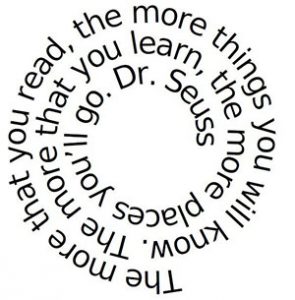Truth Matters
If art must tell the truth, what is this truth, and how does it differ from the truth of science or philosophy? Literary critics can talk of moral or emotional truth, but that is hardly precise. Indeed, unless the power and the shortcomings of other concepts of truth are appreciated, poetry may remain the poor relation, something fanciful and pleasing but not to be taken seriously.
We start with the logical approach, often called the analytic to distinguish it from the continental schools. What do we mean by calling something true? Most obviously we mean according with or corresponding to “the facts”. Logicians would insist on being more specific, however, and in two ways. Given a sentence, they would first strip out the context, and then ensure that the remaining propositions could be simply true or false. Such an approach may be remorselessly simplistic, reducing sentences to their basic components, but the sentences then rest on assured foundations and can be built upon in logically sound ways. Perplexing sentences like: ‘The present King of France is bald’ can be re-expressed as a conjunction of three propositions — 1. there is a King of France, 2. there is not more than one King of France, and 3. everything that is a King of France is bald.
What about logical paradoxes? All Cretans are liars. If asserted by a Cretan, all of whom are liars, the statement must be false — which must mean that Cretans tell the truth. How can we stop sentences referring to themselves? Alfred Tarski’s solution was to consider the primary sentence as written in an object language, and a sentence which asserted truth or falsity of the preceding sentence as written in a metalanguage. Tarski’s theory of truth focussed on the materially adequate and the formally correct. For the first he proposed that any acceptable definition of truth should have as consequence all instances of the schema (called a T schema) that: S is true iff p (S is true if and only if p is true). For the second he required that both languages, object and metalanguage, be logically formulated, but that the metalanguage also follow the usual rules of definitions.
Yet the T schema is not a definition of truth. The languages of the two sides are separate. Moreover, we should avoid anything that involved the meanings of the constituent words, which are not primitive, i.e. do not rest on things self-evident. Tarski’s truth was “satisfaction”, a relation between open sentences and matters that satisfy them. And that was all. Though Tarski set out formally the concepts of reference, satisfaction and truth, the method evaded what philosophers have generally expected of truth.
But the correspondence theory always had a basic weakness. Things in the world are not directly given to us: we make interpretations and intelligent integrations of our sensory experience. A more attractive approach to some was the coherence theory of truth. Something was true when it fitted neatly into a well-integrated body of beliefs. Though this concept of truth may seem more applicable to aesthetics or sociology, even a scientific theory is commonly preferred on the grounds of simplicity, utility, theoretical elegance and strength. But if the set of beliefs needs to be as comprehensive as possible — and it does — what is to stop us inflating the system with beliefs whose only merit is that they fit the system — i.e. make a larger but still consistent fairy-tale? And if we introduce plausibility filters, how are we to select them except by the circular reasoning that they simply work?
In its crudest form, that something is true because it yields good works or congenial beliefs, the pragmatist theory has few adherents. But its proponents — Pierce, James, Dewey and latterly Quine — put matters more subtly. Reality, said Pierce, constrains us to the truth: we find by enquiry and experiment what the world is really like. Truth is the consensus of beliefs surviving that investigation — a view that includes some correspondence theory and foreshadows Quine’s web of beliefs. James was not so committed a realist, and saw truth as sometimes manufactured by the verification process itself — a view that links him to relativists like Feyerband. But such approaches make truth into a property acquired in the individual circumstances of verification, perhaps even individual-dependent, which falls far short of what most philosophers have desired.
Such — very crudely: the reader should consult philosophy textbooks — are the successes and limitations of the logical approaches. But language is not entirely logic: do not codes and social customs play some part? And is not logic itself an unreal process of abstraction? Perhaps we should extend the search to meaning.
Theories of Meaning
Philosophers have struggled hard this century to arrive at a something that will tell them where and how meaning is to be sought. They have sought some theory that should encompass requirements like: There are sounds or marks on paper that possess meaning — they refer to things and can be true. Meaning is given in specified ways by the words themselves and syntax. Sentences should be composed of smaller units (propositions), each of which indicate the conditions to be satisfied to make each sentence true. There should be rules governing sentence composition. Language occurs in some context, and must express beliefs, hopes, intentions, etc. While these beliefs and hopes, etc. are no doubt states of the speaker’s nervous system, the sentences should also relate to exterior objects and situations. Believing something is a relation to what is being believed: this relationships should be capable of being treated in some systematic way. Ultimately, though we cannot do so yet, semantics and psychology should reduce to physical acts and entities.
Has such a theory been found? Not really. Some requirements are satisfied by one theory, and some by another, but there is no single encompassing theory that commands general acceptance. All the same, the attempts are fascinating in their own right, and need to be understood if the literary theory is to be seen in context.
The Logical Positivists cut the Gordian knot. Either, they said, sentences are statements of fact, when they can be verified. Or they are analytical, resting in the meaning of words and the structures that contain them. All other sentences — i.e. metaphysical, aesthetic and ethical statements — are only appeals to emotion, and therefore have no intellectual content. Logical Positivists supposed that language had simple structures and that the facts they held were largely independent of that language. They supposed that matters which inspired the greatest reverence in individuals and which united communities could be dismissed as meaningless. And they supposed that verification — for which science was the admired paradigm — amounted to no more than reference to straightforward, immediately-given sense data. None of these is true, and the Logical Positivist approach was not pursued much after the 1960s.
Logical Positivism had nonetheless done good work in clearing away the tangle of philosophic argument. Perhaps more could be done? The later Wittgenstein argued that the purpose of philosophy was to clarify issues, to see through the bewitchment of language and demonstrate that conundrums of meaning arose through words being used beyond their proper remit. In short, rather than immerse ourselves in abstruse theory, we should study language as actually used, by everyday people in everyday situations. Philosophy should not be the final arbiter on use, but more the humble investigator.
J.L. Austin’s How to Do Things with Words was a seminal work, and his approach was extended and systematised by John Searle and others. Meaning is real and includes both what the speaker intended and what he actually said — i.e. the function of a sentence and its internal structure. Speech, moreover, is rule-governed, and we should be able to spell out these rules. Paul Grice concerned himself with differences in intention between the said and the meant, and in analysing conversational situations. Implication was conveyed by general knowledge and shared interest. And an action intended to induce belief would have to a. induce that belief, b. be recognised as such by the hearers, and c. be performed with every intention of being recognised as such.
Intention-based semantic theories are popular and still actively pursued. But they have not entirely succeeded in reducing meaning and psychology to actions and utterances. If meaning is defined as acting so as to induce belief and action in another, theories of meaning must be grounded in non-semantic terms to avoid circularity. It seems doubtful whether this can be done. Individuals act according to beliefs, and the communication of these beliefs eventually and necessarily calls on public beliefs and language.
Is there another way of cutting through the tangle of belief and language-dependence? One very influential programme was that of John Davidson, which made the meaning of the sentence simply its truth conditions. The meaning of a trivially simple example: The moon is round are the conditions that the sentence is true, namely that the moon is indeed round. No more than that. The programme sidesteps troublesome philosophical issues — the mind-body problem, problems of knowledge, deep grammar, social usage — to state facts in a logically-transparent language, but most philosophers expect more of a theory of meaning.





